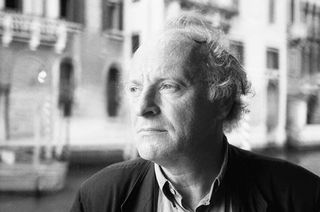
Over at Brain Pickings:
2. Now and in the time to be, try to be kind to your parents. If this sounds too close to “Honor thy mother and father” for your comfort, so be it. All I am trying to say is try not to rebel against them, for, in all likelihood, they will die before you do, so you can spare yourselves at least this source of guilt if not of grief. If you must rebel, rebel against those who are not so easily hurt. Parents are too close a target (so, by the way, are sisters, brothers, wives or husbands); the range is such that you can’t miss. Rebellion against one’s parents, for all its I-won’t-take-a-single-penny-from-you, is essentially an extremely bourgeois sort of thing, because it provides the rebel with the ultimate in comfort, in this case, mental comfort: the comfort of one’s convictions. The later you hit this pattern, the later you become a mental bourgeois, i.e., the longer you stay skeptical, doubtful, intellectually uncomfortable, the better it is for you.
On the other hand, of course, this not-a-single-penny business makes practical sense, because your parents, in all likelihood, will bequeath all they’ve got to you, and the successful rebel will end up with the entire fortune intact — in other words, rebellion is a very efficient form of savings. The interest, though, is crippling; I’d say, bankrupting.
3. Try not to set too much store by politicians — not so much because they are dumb or dishonest, which is more often than not the case, but because of the size of their job, which is too big even for the best among them, by this or that political party, doctrine, system or a blueprint thereof. All they or those can do, at best, is to diminish a social evil, not eradicate it. No matter how substantial an improvement may be, ethically speaking it will always be negligible, because there will always be those — say, just one person — who won’t profit from this improvement. The world is not perfect; the Golden Age never was or will be. The only thing that’s going to happen to the world is that it will get bigger, i.e., more populated while not growing in size. No matter how fairly the man you’ve elected will promise to cut the pie, it won’t grow in size; as a matter of fact, the portions are bound to get smaller. In light of that, or, rather, in dark of that — you ought to rely on your own home cooking, that is, on managing the world yourselves — at least that part of it that lies within your reach, within your radius. Yet in doing this, you must also prepare yourselves for the heart-rending realization that even that pie of yours won’t suffice; you must prepare yourselves that you’re likely to dine as much in disappointment as in gratitude. The most difficult lesson to learn here is to be steady in the kitchen, since by serving this pie just once you create quite a lot of expectations. Ask yourself whether you can afford a steady supply of those pies, or would you rather bargain on a politician?
More here.
David Spencer at berfrois:
